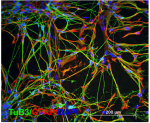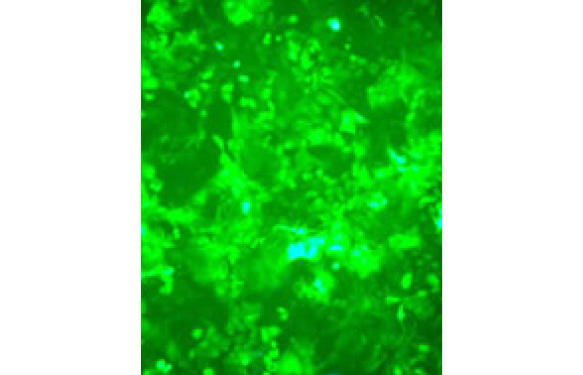Cellular reprogramming is a process by which a fully differentiated cell type with specialized functions, is brought to be transformed into another cell type. This reprogrammed cell type exhibits different characteristics and functions it would not display initially under normal physiological conditions.
Since 2006, cell reprogramming and generation of induced Pluripotent Stem (iPS) cells has opened up outstanding opportunities for Stem cell research and drug discovery programs for personalized medicine. This is due to the fact that these methods bring Life Scientists an almost continuous and inexhaustible source of cells from targeted somatic (healthy or diseased) cells (1, 4).
Usually, cell reprogramming is a 4-step based experimental process:
- Step 1 – Tissue & cell preparation
- Step 2 – Cell reprogramming
- Step 3 – Cell expansion & maintenance
- Step 4 – Cell characterization & analysis
Cell reprogramming and iPS cells require rigorous and robust cell culture conditions (eg. Oxygen levels) and in particular, use of validated reliable reagents to attain these conditions: KMOSL ORF cDNAs, mature RNAs, bioactive small molecules, active proteins, media, stabilized growth factors (StemBeads), primary antibodies for cell characterization (5 – 13)…
For therapeutical perspectives, there is a strong need to improve cell reprogramming efficiency but also safety by limiting the risks linked to genome integrity (ex. use onf C-MYC and KFL4 oncogenes), alterations of intracellular pathways (ex. p53) that might lead to cancer phenotypes and apoptosis… In addition, conventional reprogramming viral procedures are long (several weeks) and relatively unefficient (<0.001%).
A continuous and innovative flow of cell reprogramming strategies
To improve safety and robustness of their cell reprogramming strategies, researchers are designing alternative approaches:

- Recent discoveries aim at controlling cellular fate with more flexible approaches such as transdifferentiation, dedifferentiation, transdetermination, direct cell conversion or reprogramming (eg.Cardiomycyte-like cells; 14-15).
- Chemically induced pluripotentStem Cells (CiPCs) have also been described (16) (see my previous post “Bioactive small molecules make exogenous reprogamming genes dispensable“).
- Recently, iPS cells pre-engineered with modern genome editing technologies (TALEN, CRISPR) have been published (17; Xcell Science). These cellular models can mimick CNS disorders in vitro (eg. Alzheimer’s disease (AD), Parkinson’s disease (PD), Autism, Schizophrenia, and Amyotrophic Lateral Sclerosis (ALS); see the previous post by Jean-François (Isogenic Knockout iPSC Lines for Modeling of CNS Disorders).

- Interestlingly, the role for microRNAs in the maintenance and retention of pluripotency for both embryonic stem (ES) cells and iPS cells have been demonstrated (18, 19). Miyoshi et al. showed that the delivery of specific µRNA combinations functionally reprogram human fibroblasts to a pluripotent state without exogenous reprogramming factor expression (20). A new microRNA-enhanced mRNA reprogramming method generating high-quality human iPS cell lines and eliminating conventional feeder co-culture during the reprogramming process, is now commercially available through Stemgent-Asterand and tebu-bio.
- As far as using cocktails of small molecules in cell reprogramming, Ichida et al. recently demonstrated that the inhibition of the NOTCH pathway of mouse and human keratinocytes by the inhibitor DAPT (eg. DAPT by Focus Biomolecules) make possible to routinely produce iPS cells without the use of C-MYC and KFL4 oncogenes. These C-MYC and KFL4-free iPS cells have intact p53 activity for a better genomic integrity and safer iPS cells (21).
21 “must-read” cell reprogramming-related publications to add to your library:
1. Takahashi et al. (2007) “Induction of Pluripotent Stem Cells from Adult Human Fibroblasts by Defined Factors“
2. Yu et al. (2007) “Induced Pluripotent Stem Cell Lines Derived from Human Somatic Cells“
3. Lee et al. (2012) “Activation of Innate Immunity Is Required for Efficient Nuclear Reprogramming“
4. Peluso C.E. (2013) “Induced pluripotent stem cells in high-throughput cellular screening” (review)
5. Shi et al. (2008) “A Combined Chemical and Genetic Approach for the Generation of Induced Pluripotent Stem Cells“
6. Chan E.M., Yates F. et al. (2008) “Enhanced plating efficiency of trypsin-adapted human embryonic stem cells is reversible and independent of trisomy 12/17“
7. Huangfu et al. (2009) “Induction of pluripotent stem cells by defined factors is greatly improved by small-molecule compounds“
8. Zhou et al. (2009) “Generation of Induced Pluripotent Stem Cells Using Recombinant Proteins“
9. Ding et al. (2009) “Major Step In Making Better Stem Cells From Adult Tissue” (review)
10. Warren et al. (2010) “Highly Efficient Reprogramming to Pluripotency and Directed Differentiation of Human Cells with Synthetic Modified mRNA“
11. Zhou et al. (2012) “Generation of human induced pluripotent stem cells from urine samples“
12. Nie et al. (2012) “Cellular reprogramming: a small molecule perspective“
13. Lotz et al. (2013) “Sustained Levels of FGF2 Maintain Undifferentiated Stem Cell Cultures with Biweekly Feeding”
14. Takahashi k. (2012) “Cellular reprogramming – lowering gravity on Waddington’s epigenetic landscape” (review)
15. Wada et al. (2013) “Induction of human cardiomyocyte-like cells from fibroblasts by defined factors”
16. Hou et al. (2013) “Pluripotent Stem Cells Induced from Mouse Somatic Cells by Small-Molecule Compounds”

17. Peters et al. (2013) “Genome editing in human pluripotent stem cells” (protocol)
18. Sridharan et al. (2011) “Small RNAs loom Large During Reprogramming“
19. Judson et al. (2009) “Embryonic Stem Cell-Specific microRNAs Promote Induced Pluripotency“
20. Miyoshi et al. (2011) “Reprogramming of Mouse and Human Cells to Pluripotency Using Mature MicroRNAs“
21. Ichida et al. (2014) “Notch inhibition allow oncogene-independent generation of iPS cells“
Which cell reprogramming strategies have you found very promising?
Your input about protocols aimed at safer, faster and efficient cell reprogramming strategies are welcome. Share your experience, discoveries or thoughts in the “comment section” below!
![]() Looking to share ideas, protocols or to establish collaborations in relation with Stem Cells & Cell Reprogramming?
Looking to share ideas, protocols or to establish collaborations in relation with Stem Cells & Cell Reprogramming?
Join the S2CR: Stem Cell & Cell Reprogramming Network LinkedIn community!




